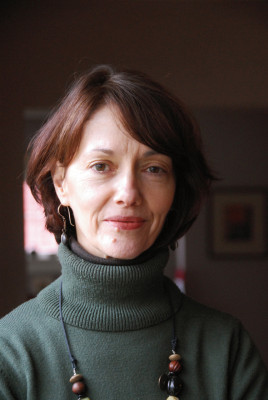Stories From Michoacán

In the United States today, we have a single story of Mexico: drug trafficking and violence. You might know of cartel-related troubles in Zacatecas, the beautiful silver mining town, but not the sustainable energy installation in the airport there or other bright spots in Mexico’s environmental movement. Many lament Mexico’s economic crises. But consider the Economist article of November 2012 that cites Mexico’s GDP as just ahead of South Korea’s.
Granted, Mexico has problems. Granted, news everywhere leads when it bleeds. But rarely does blood drown other stories so thoroughly.
Stories do more than deliver information; they offer connective tissue. In The Storytelling Animal, Jonathan Gottschall argues that we are hardwired to tell and consume stories, and that doing so makes us more empathetic to others. I often ponder how our failure to hear Mexican stories feeds anti-immigrant fervor in the United States. Such sentiments, of course, clash with the Founding Story of the U.S. as a land of immigrants. But little matter. Contradictions dissolve in the face of power: whoever defines the dominant story narrows our focus to one possibility.
This spring, with the help of a Fulbright–Garcia Robles grant, I’ve heard diverse stories of Mexican life. At La Universidad Latina de América in Morelia, the capital of Michoacán, I teach a class called Telling Lives: Reading, Recording, and Writing Life Stories. We explore the differences and similarities in U.S. and Mexican nonfiction. My students write and tell poignant, funny, and surprising stories. They explore national identity. Dhilery describes encountering the Mexican pavilion at the 2010 World Expo in China; Dinorah tells of having to “build” a Mexican identity after living in Spain; and Maribel, a Mexican American from Los Angeles, is here on a reverse journey, seeking roots in the land of her grandparents. Talía laments but also parodies cultural stereotypes. When she studied in France, a neighbor asked to borrow her Mexican sombrero for a Halloween costume, amazed to discover that Talía didn’t have one. “I wanted to ask,” Talia says now, ‘Where is the baguette that should be under your arm?’”
Universal themes surface: family and home. In Miriam’s grandmother’s patio in Morelia, place is as central as sand and sea are to Carlos and Grecia’s stories of Ixtapa and Zihuatanejo. Elsa, a Morelia transplant after years in Mexico City, writes of displacement from one home and the embrace of a new one.
I have my own story of place. Born to a long line of Irish ancestors who journeyed to New England, I moved to the Pacific Northwest in my 20s, wandered north to Alaska before graduate school, and returned to Oregon 25 years ago to find home there—a long trail from one green place to another.
When my husband, Bob, and I first came to Michoacán in the 1990s, I responded to the densely forested mountains as though to ancestral memory. For more than a dozen years, we returned to visit and listen to stories of la vida cotidiana. Yes, there are problems in parts of Michoacán. But what I heard and saw often clashed with what I read in U.S. news coverage.
That schism between news reports and my daily experience of Michoacán has only deepened with time. While violence dominates U.S. news, I attend yoga classes, shop at Costco, and walk at night through Morelia’s jacaranda-filled parks. I’ve witnessed and participated in the rich cycle of traditions for Christmas, Carnaval, and Semana Santa (Easter week). Students in my workshop have written essays and profiles based on interviews with friends and coworkers, family members, sex workers, and the staff of Mujeres Aliadas, a regional women’s health care project. Some of this writing appears on my blog, “Stories from Michoacan.” More will be featured in the next few months.
These stories convey the resilience of cultural traditions but also the power of social change. Poco a poco is how transformation happens, say Margarita and Veronica, community workers with Mujeres Aliadas who serve 40 different pueblos. So it is with stories. I hope that these chronicles of daily experience will, little by little, fill in gaps, illuminate Michoacán life, and highlight our deeply connected cultures.
Joanne Mulcahy teaches in the Northwest Writing Institute/Center for Community Engagement and codirects the Documentary Studies Certificate Program in the Graduate School of Education and Counseling. She is the author of Birth and Rebirth on an Alaskan Island and Remedios: The Healing Life of Eva Castellanoz.
Graduate Communications is located in room 205 of Rogers Hall on the Graduate Campus.
voice 503-768-6054
fax 503-768-6053
Graduate Communications
Lewis & Clark
615 S. Palatine Hill Road
Portland OR 97219

